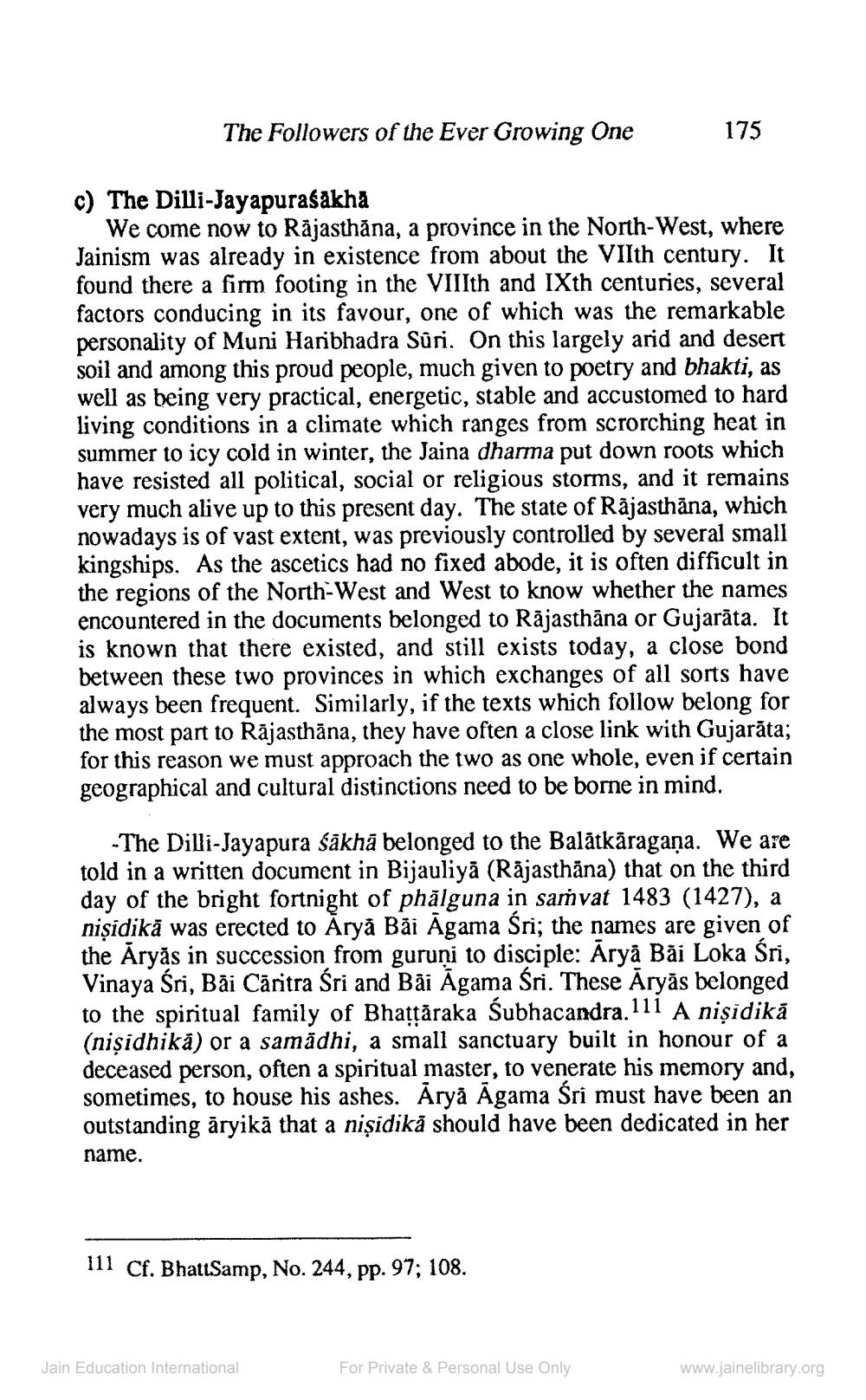________________
The Followers of the Ever Growing One
c) The Dilli-Jayapuraśākhā
We come now to Rajasthana, a province in the North-West, where Jainism was already in existence from about the VIIth century. It found there a firm footing in the VIIIth and IXth centuries, several factors conducing in its favour, one of which was the remarkable personality of Muni Haribhadra Suri. On this largely arid and desert soil and among this proud people, much given to poetry and bhakti, as well as being very practical, energetic, stable and accustomed to hard living conditions in a climate which ranges from scrorching heat in summer to icy cold in winter, the Jaina dharma put down roots which have resisted all political, social or religious storms, and it remains very much alive up to this present day. The state of Rajasthäna, which nowadays is of vast extent, was previously controlled by several small kingships. As the ascetics had no fixed abode, it is often difficult in the regions of the North-West and West to know whether the names encountered in the documents belonged to Rājasthāna or Gujarāta. It is known that there existed, and still exists today, a close bond between these two provinces in which exchanges of all sorts have always been frequent. Similarly, if the texts which follow belong for the most part to Rajasthāna, they have often a close link with Gujarāta; for this reason we must approach the two as one whole, even if certain geographical and cultural distinctions need to be borne in mind.
-The Dilli-Jayapura śākhā belonged to the Balātkāragaṇa. We are told in a written document in Bijauliyā (Rājasthāna) that on the third day of the bright fortnight of phālguna in saṁvat 1483 (1427), a nişidika was erected to Arya Bai Agama Śri; the names are given of the Aryas in succession from guruni to disciple: Arya Bãi Loka Śri, Vinaya Śri, Bãi Caritra Śri and Bãi Agama Śri. These Aryās belonged to the spiritual family of Bhattaraka Subhacandra.111 A nişidikā (niṣidhikā) or a samadhi, a small sanctuary built in honour of a deceased person, often a spiritual master, to venerate his memory and, sometimes, to house his ashes. Arya Agama Śri must have been an outstanding aryikā that a niṣidikā should have been dedicated in her
name.
111 Cf. BhattSamp, No. 244, pp. 97; 108.
175
Jain Education International
For Private & Personal Use Only
www.jainelibrary.org




